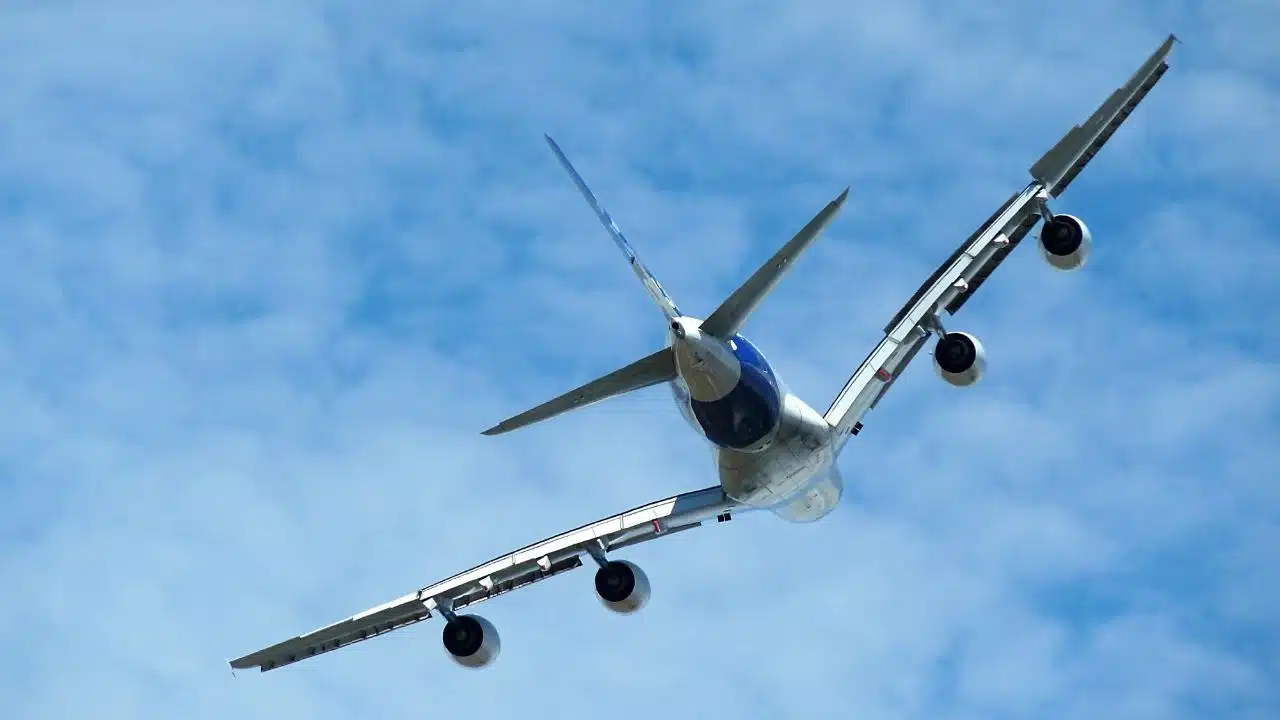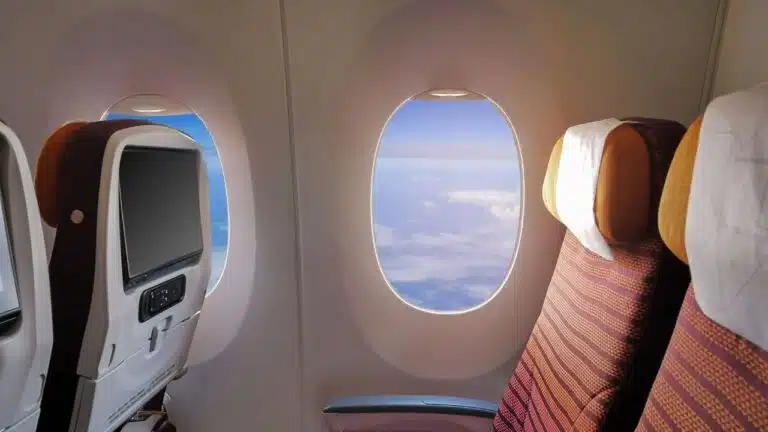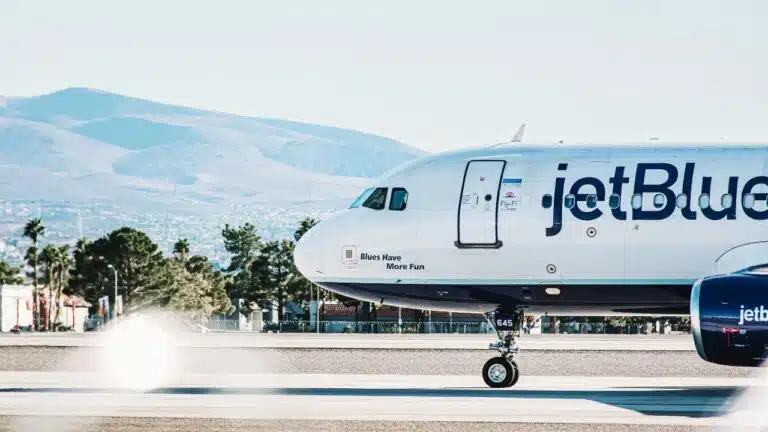It says a lot about JetBlue’s journey that they’re standing here today. Founded less than fifteen years ago, its years in operation don’t hold a candle to carriers like Delta Air Lines, Alaska Airlines, or even Southwest. But despite its youth, it’s risen to be one of the top airlines and on a stage to be compared with United, one of the oldest airlines in the US. So, in the battle between JetBlue’s affordability and comfort vs. United’s global presence and rewarding loyalty program, how do they compare?
Here’s everything you need to know about JetBlue and United, what flying with each is like, and which airline you should choose for your travel needs.
Table of Contents
- United Airlines Overview
- JetBlue Airways Overview
- Which Airline Is Better, JetBlue or United?
- JetBlue vs. United Airlines: Reservations
- JetBlue vs. United Airlines: Fare Classes
- JetBlue vs. United Airlines: Ticket Changes & Cancellation Policies
- JetBlue vs. United Airlines: Baggage Allowances
- JetBlue vs. United Airlines: Check-in
- JetBlue vs. United Airlines: Boarding
- JetBlue vs. United Airlines: Seat Comfort and Legroom
- JetBlue vs. United Airlines: Inflight Food & Drinks
- JetBlue vs. United Airlines: Inflight Entertainment
- JetBlue vs. United Airlines: Loyalty Program
- JetBlue vs. United Airlines: Reliability
- JetBlue vs. United Airlines: Safety Rating
- JetBlue vs. United Airlines: Credit Card
- JetBlue vs. United: Which One Should I Choose?
- Next Vacay Finds You the Cheapest Deals on Any Airline
United Airlines Overview
United Airlines is a major legacy carrier in the US, with more than 900 jets in its mainline fleet. Its massive size and impressive destination list, covering over 340 destinations on every continent except for Antarctica, makes it a major player on the world stage. So, for travelers looking for the ultimate list of destinations to travel to, United is clearly the bigger of the two airlines and the obvious choice vs. JetBlue.
Being the biggest in the world isn’t always a surefire road to being the best, but it has its perks. For example, United is part of a global alliance, promising a smoother transfer experience and an extensive rewards network. It also means airport lounges for premium passengers, numerous aircraft sizes, and premium flight options (domestic first class and international business class).
JetBlue Airways Overview
JetBlue is a New York-based airline, and while its fleet size is nowhere near as large as United’s—270 vs. 834 aircraft—this low-cost domestic airline still manages to hold its own.
Because it’s headquartered in New York, JetBlue has a significant presence on the east coast. The airline mainly offers domestic flights, with most destinations in the contiguous US (none to Hawaii and Alaska). However, JetBlue also offers an international selection to Mexico, the Caribbean, South America, and London.
What Jetblue lacks in size—and additional perks—the airline makes up for in consistency and quality. JetBlue’s premium options are the best in the business.
Which Airline Is Better, Jetblue or United?
The best airline depends on where you’re going, the experience you want to have, and the price you want to pay. JetBlue Airway’s premium lie-flat seats are hard to beat, but United Airlines’ global network means you can travel almost anywhere and earn while you do it.
Of course, this nuance is something to keep in mind as you review airlines. You can compare reports of the best-ranked airlines all day, but an airline can’t be the best if it doesn’t have something you need. And if that something is a specific destination, well, then the choice suddenly gets a lot easier.
So, in the battle of United Airlines vs. JetBlue Airways, which is better for your next flight? We’ll take you through everything each has to offer, from ticket policies to in-flight meals and loyalty programs, so you can decide which airline to book your next trip through.
JetBlue vs. United Airlines: Reservations
Jetblue
Booking flights on the JetBlue website only takes a few minutes. Travelers can enter their flight details, and as soon as they click on dates, JetBlue’s calendar populates with low-fare pricing displayed. So, if your dates aren’t set in stone, you may immediately spot some savings by flying out a day earlier or later.
Once you’ve chosen your dates, you can view the flights available. JetBlue displays its available fare classes on the left-hand side, and each flight option on the right contains a dropdown with amenities and a seat map available to peruse. Travelers can choose their fares, review their choice, then proceed to checkout.
United
Reserving a flight is quick and painless on the United website. Travelers can either enter in exact travel dates and a destination or use United’s Explore feature to peruse pricing options for flexible dates and destinations. Once selected, you can fill out your information and purchase tickets immediately or pay to have them held to buy at a later date.
JetBlue vs. United Airlines: Fare Classes
Jetblue
JetBlue offers five fare options: four classes in Economy and one premium option.
- Blue Basic
- Blue
- Blue Extra
- Blue Plus
- Mint
The first four fall within the bounds of the Economy cabin, each with different perks included within the fare coverage. Blue Basic is JetBlue’s no-frills fare; like other Basic Economy fares, it offers the lowest prices but not much else. The remaining three Economy fares provide various benefits ranging from a free carry-on or checked bag to early boarding and no fees on changes/cancellations.
Meanwhile, Mint is the best of the best, a premium cabin experience available on some JetBlue aircraft flying regionally and abroad. It includes all the perks of the Economy fares plus extras like lie-flat seats.
United
When it comes to experiences offered, United wins over Jetblue in numbers, with seven different fare classes offered up to Delta flyers.
- Basic Economy
- Economy
- Economy Plus
- United Premium Plus
- Business Class (the US, Latin America, the Caribbean, and some international)
- First Class (the US and Canada)
- Polaris Business Class (long-haul international flights)
Like JetBlue, United’s Basic fare is its cheapest option but includes the least amount of flexibility. The obvious leg up that United has on JetBlue is the choice of available fares, with several premium options to fit a broader range of budgets. These premium options have more flexibility and additional perks like extra legroom, plusher seating on long-haul flights, and premium amenities.
JetBlue vs. United Airlines: Ticket Changes & Cancellation Policies
Jetblue
Ticket changes and cancellations are free on all fare types except Blue Basic. On a Basic fare, changes and cancellations cost $100 for flights within the US, Caribbean, Mexico, and Central America and $200 for all other routes.
JetBlue provides a 24-hour refund window to cancel without being charged a fee as long as your fare is booked seven days before departure.
Or, for a more flexible option, you can purchase refundable fares. With these fares, passengers can receive a full refund by canceling before the scheduled departure. If the cancellation occurs after take-off, the funds are put in a JetBlue Travel bank as a future travel credit.
Unfortunately, not all flights offer refundable fares, so this option may not be available on specific flights or routes.
United
United Airlines now boasts no change fees for most of their fare classes. It’s no surprise, but this policy doesn’t extend to Basic Economy. However, if you’re flying domestically (including Alaska and Hawaii), to the Caribbean, or Mexico with an Economy class or Premium cabin ticket, you’re covered.
As for cancellations, even Basic Economy tickets are refundable within 24 hours of booking. However, outside the 24-hour window, travelers flying Basic Economy must pay a fee of $49.50 to $199 to cancel, similar to a recent change Delta Air Lines has made. Instead of a refund, the remaining funds become a travel credit.
For all other fare classes, refundable tickets provide a cash refund if you need to cancel. Nonrefundable tickets get you a future travel credit.
JetBlue vs. United Airlines: Baggage Allowances
Jetblue
Baggage allowances differ depending on your fare type. However, JetBlue guarantees that on all domestic routes, carry-on bags for Blue and above fares will fit on the plane, or passengers will receive a $25 credit. Additionally, Mosaic members fly with a free carry-on bag and up to two free checked bags on every flight, no matter the fare type purchased.
Basic Blue: Only includes one personal item to fit under the seat in front with no carry-on. The only exceptions are for Mosaic customers, passengers traveling to/from London, active military, unaccompanied minors, and combinations of Blue Basic with an Even More Space seat.
Blue & Blue Extra: Passengers receive one free personal item, one free carry-on, and a free checked bag only flying to or from London.
Blue Plus: Customers receive one free personal item, one free carry-on, and one free checked bag, no matter the route.
Mint: The best of the best, Mint flyers have included one personal item, one carry-on bag, and up to two free checked bags on every flight.
United
United’s baggage allowances differ depending on the flight route and fare. And unlike JetBlue, United doesn’t guarantee enough overhead bin space for any flight. So, don’t be surprised if you’re flying Economy with a carry-on bag and get the dreaded request from a flight attendant to gate-check your luggage.
Basic Economy: Flyers get one complimentary personal item. Only Premier MileagePlus members or passengers flying to South America, Trans-Atlantic, or Trans-Pacific automatically receive a free carry-on.
Economy & Economy Plus: Tickets include one personal item and one carry-on bag.
United Premium Plus: Flyers get one personal item and one carry-on bag for all travel, with dedicated overhead bin space as a significant bonus, i.e., no gate-checking.
Business Class, First Class, & Polaris Business Class: Tickets include the aforementioned personal item and carry-on with dedicated overhead bin space and two free checked bags with priority baggage handling.
JetBlue vs. United Airlines: Check-in
Jetblue
JetBlue Airways encourages travelers to check in online and offers touch-free services whenever possible. The free mobile app allows passengers to access their boarding passes, add bags, change seats, and more. In addition, self-service lobbies and touch-free printing are available in more than 30 cities.
Mint passengers will also find dedicated check-in counters and expedited security lines to carry them through the airport swiftly.
United
United’s online check-in is available 24 hours before departure for most passengers. A few noted exceptions are reservations with special requests requiring you to see a United representative, paper-ticketed reservations, and Basic Economy tickets (unless you’re checking a bag).
For checking in at the airport, United Airlines offers curbside check-in, self-service kiosks, ticket counters, and voice check-in.
The airline also offers Premier Access, which includes, among other services, designated check-in lines and security lines. Passengers can purchase it, or it comes complementary for those members in MileagePlus Premier, premium cabin, or with Star Alliance Gold, MileagePlus Club, or Presidential Plus credit card members.
JetBlue vs. United Airlines: Boarding
Jetblue
Customers on the same reservation who check in together are assigned to the same boarding group.
JetBlue boards its passengers in groups, with priority boarding given to Mosaic, Mint, and Even More Space passengers. Blue, Blue Extra, and Blue Plus customers board after active military and families with children, while Basic Blue passengers board last.
United
United offers pre-boarding for several groups, including active military, those with disabilities, and unaccompanied minors. Following pre-boarding, United breaks its boarding classes down by membership statuses, fare types, and cardholders.
Group 1
- Premier Platinum members
- Premier Gold members
- Star Alliance Gold members
- Premium cabin passengers: United Polaris, United First, and United Business
Group 2
- Premier Silver members
- Star Alliance Silver members
- Customers who have purchased Premier Access or Priority Boarding
- United Explorer, Club, Presidential Plus, and Awards Cardmembers
Groups 3–5
- Economy Plus
- United Economy
- Basic Economy
While Basic Economy boards last, Premier members, qualifying cardholders, and Star Alliance Gold members with Basic fares can board in their standard priority groups.
JetBlue vs. United Airlines: Seat Comfort and Legroom
Jetblue
Economy seating isn’t necessarily the same on every airline. This holds true in the JetBlue vs. United debate. The biggest upside to JetBlue seats is that each one comes with a TV screen and 32-34 inches of legroom. This combination provides one of the most generous experiences in Economy class on any US airline and is far better than you’ll find on other low-cost carriers like Spirit or Frontier Airlines.
But, if the most legroom in any Economy class cabin still isn’t enough, passengers can upgrade to Even More Space seats for 7” extra legroom, early boarding, and faster check-in.
Regular Economy class tickets on JetBlue, including Blue, Blue Extra, and Blue Plus, all have advanced seating selection.
Meanwhile, JetBlue’s Mint fare is their first-class experience on domestic flights and business class experience on international flights. These feature some of the best lie-flat seats in the US. When it comes to the domestic experience, not even carriers like United or American Airlines can compare with the privacy and comfort of Mint Studios.
United
Compared to JetBlue’s impressive legroom stats, United barely meets the industry standard for Economy seating with 31 inches of legroom. However, upgrading to Economy Plus or Premium Plus offers up to 37 inches of legroom.
For an authentic premium experience, business and first class offer up to 78 inches of pitch with leather reclining seats (business) or open suite/flatbed reclining seats (first class).
Polaris seats are United’s International business class option. Over six feet in length, these seats are forward-facing, and each comes equipped with privacy dividers for added comfort. While a fantastic choice for international travel, JetBlue edges out United in this category for the simple fact that their suites can be fully closed out, offering a bit more privacy.
JetBlue vs. United Airlines: Inflight Food & Drinks
Jetblue
The Economy cabin experience is the same whether you book Even More Space seats or a regular Blue Basic, Blue, Blue Extra, or Blue Plus ticket. JetBlue offers a complimentary drink and unlimited snacks every flight, so you can indulge to your heart’s content. The airline also offers food for purchase. Nothing fancy, but still a better experience than others like Spirit Airlines, which charges for the tiniest snack.
On the other hand, Mint offers first-class food that ranks among the best airline food in the US. Yes, that means better than United Airlines. But, from the quality of their selections to the presentation, JetBlue’s Mint meals stand out in the industry.
United
United has quite a few more fares and routes than JetBlue, so food and drink options vary. Economy seats within North America, the Caribbean, and most of Latin America include complimentary snacks and drinks. However, for long-haul flights, customers are also treated to complimentary beer and wine and a three-course meal service.
United Premium Plus seats include free drinks (alcoholic beverages, too) and snacks with hot meals and dessert served on longer flights.
In Business and First Class, all drinks are complimentary, with snacks and upgraded dining options provided on longer flights.
United Polaris offers the most premium experience with a welcome beverage after you board, along with a pre-meal drink and cocktail snacks. In fact, snacks are available throughout the flight, along with mid-flight meals depending on the route.
JetBlue vs. United Airlines: Inflight Entertainment
Jetblue
JetBlue prides itself on being first of the pack in several areas, and one of those is its inflight entertainment. Every passenger, no matter their fare, has access to a TV.
Their updated aircraft also sport new touchscreens. In addition to hours of content and live shows, customers can also take advantage of the free in-flight Wi-Fi, considered the best among US airlines.
United
Unlike JetBlue, United doesn’t offer seatback entertainment or free Wi-Fi, though most flights offer free messaging. However, United plans to change that in the coming years, retrofitting many of its older planes to include seatback entertainment. Until then, passengers can check their Inflight Amenities on the Flight Status page to see what services their flight includes.
For aircraft that offer seatback TVs, customers can enjoy over 100 live TV channels, in addition to a collection of new releases, blockbuster movies, and popular TV shows. These are displayed on 10-inch (Economy) or 13-inch (premium cabin) screens.
JetBlue vs. United Airlines: Loyalty Program
Jetblue
The airline’s reward program is called TrueBlue, which earns fluff points over United’s name for its loyalty program.
TrueBlue’s standout features are the multitude of ways to earn points, worth roughly 1.35 cents apiece through Jetblue and never expire, and reward flights that don’t have blackout dates. Compare that to its downsides: points cost more than they’re worth, and JetBlue’s limited destinations offer fewer routes to earn or cash in rewards.
United
United doesn’t earn any fluff points vs. JetBlue with its loyalty program name. But, while the name Mileage Plus lacks a bit on the surface, it makes up for it in worth. United’s loyalty program is considered one of the best in the business.
Like JetBlue, United’s miles never expire and have no blackout dates, though miles are worth less at 1.29 cents. The biggest cons are the fee for transferring miles, $7.50 per 500 miles, and the 172 percent markup on buying points.
However, United truly stands out for its destination coverage and the many ways customers can redeem miles, including upgrades, hotels, TSA PreCheck, and more.
JetBlue vs. United Airlines: Reliability
Jetblue
JetBlue has received praise in the past for being among the most punctual US airlines. However, it has repeatedly ranked behind other carriers like Delta Air Lines, American Airlines, and, yes, United Airlines.
According to a 2022 study done by WalletHub, JetBlue scored just 16.52 points out of 50 for reliability. However, the airline does seem to be trying to reduce these problems in the future. Case in point, JetBlue cut some summer routes to increase reliability for its remaining flights.
United
According to that same WalletHub study, United fared much better than JetBlue, though still far from perfect. The airline scored 26.67 points, ranking third in reliability.
However, United and JetBlue are far from the only airlines experiencing issues, with others like Southwest Airlines and American Airlines also suffering cancellations and delays. Like JetBlue, United has attempted to rectify these problems by cutting several flights to lessen the number of delays and cancellations for its passengers.
JetBlue vs. United Airlines: Safety Rating
Jetblue
Unfortunately, when it comes to safety, no US airline ranks in the world’s top five, though Alaska Airlines manages to squeak by with a top ten ranking. But sticking closer to home, the same WalletHub study found that JetBlue doesn’t fare well against its domestic competitors either. The airline scored just 17.89 points out of 30 for its safety to rank ninth out of the eleven airlines compared.
United
Once again, United comes out the winner in this comparison, with a higher safety rating over JetBlue. The airline scored 19.42 points out of 30, ranking eighth and securing it as the safer airline by an inch.
JetBlue vs. United Airlines: Credit Card
Jetblue
JetBlue offers customers two personal credit card options:
- JetBlue Card
- JetBlue Plus Card
Both cards offer sign-up bonuses and the ability to earn additional points on purchases with JetBlue, restaurants, and grocery stores. You also gain benefits like discounted cocktails and in-flight food, no foreign transaction fees, and the ability to pool or transfer points with other TrueBlue members.
Aside from that, the JetBlue card offers fewer benefits but has the not-insignificant advantage of no annual fee.
Conversely, while the JetBlue Plus Card comes with a $99 annual fee, it delivers clear benefits, including a free checked bag, earning 6X points on JetBlue purchases, and Mosaic Status with $50,000 spent in one calendar year.
United
United actually has double the number of personal cards that JetBlue provides.
The United Gateway Card is best for entry-level benefits. It comes with no annual fee or foreign transaction fees. And if you’re a more frequent user of DoorDash than United flights, the card also comes with a one-year complimentary DashPass if activated by 12/31/2024.
The United Explorer Card is best for occasional United flyers. Cardholders are treated to one free checked bag, two one-time Club passes, $100 credit for Global Entry/TSA PreCheck, and insurance covering trip cancellations/delays and baggage.
The United Quest Card is best for frequent United flyers. This card offers free first and second-checked bags and the same $100 credit for Global Entry/TSA PreCheck as the Explorer Card. Additionally, the Quest card provides a $125 credit for United purchases, cutting the $250 annual fee in half.
The United Club Infinite Card is best for United Club access. Club cardholders get similar benefits to the Quest card, like the first and second checked bag free and a $100 credit for Global Entry/TSA PreCheck. They also receive 4X miles on United purchases, access to all United Clubs and participating Star Alliance lounges, and a twenty-five percent credit on inflight purchases.
Jetblue vs. United: Which Should I Choose?
So, now that we’ve had a side-by-side comparison of JetBlue vs. United and their main features, it’s time to decide which airline to choose for your next flight. Both airlines dominate in specific areas. JetBlue offers low prices for hard-to-beat comfort, while United provides far superior routes and reliability.
Choose JetBlue if you want more legroom, better entertainment (including free Wi-Fi), tastier in-flight food, and premium lie-flat seats on routes like New York to California.
Conversely, United will be the better choice for earning and redeeming points with other airlines in the Star Alliance, flying to more routes globally and domestically, and getting lounge access (something JetBlue doesn’t offer).
Next Vacay Finds You the Cheapest Deals on Any Airline
No matter which side of the JetBlue vs. United debate you fall on, everyone can agree that cheap deals are the best way to travel. Next Vacay makes flying cheaper and easier than ever with magical deals that appear right in your inbox.
Every deal we send is hand-vetted by a real person with you, the traveler, in mind. Worried about expensive add-ons, long layovers, and limited dates to fly? Our deal hunters take every consideration into their review to ensure you’re not just getting the best price but the best all-around deal.
Fly in comfort with that all-elusive peace of mind by flying with Next Vacay.



